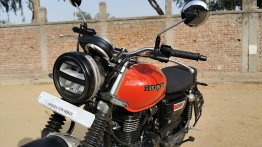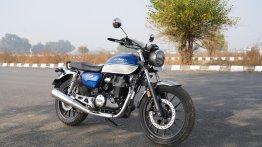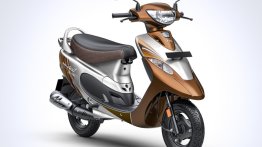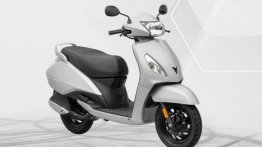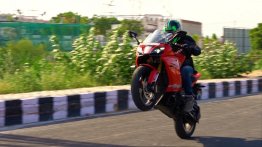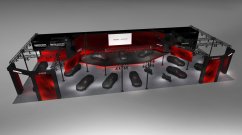BS-VI compliant motorcycles have started to arrive in the market, and among the first products to comply with the new emissions norms is the TVS Apache 4V (4-valve) series. We test rode the motorcycle at TVS Motor Company’s Hosur plant for the first ride experience recently. Here’s what we learnt from our brief ride experience with the BS-VI 2020 TVS Apache RTR 200 4V Review.
Also Read: TVS Motors riding gear and apparels - All you need to know
Styling and Features
Before we get on about the mechanical upgrades, let us run you through the styling changes. The visual upgrade exercise is limited, and it is primarily to keep the costs low and the price hike minimal. Regular followers would know that the BS-VI upgrade has considerably increased the ex-showroom tag, and the 2020 iteration of the RTR 200 4V is about INR 12,155 more expensive than its (BS-IV) predecessor. A comprehensive styling update would have pushed the prices even higher.
Also read: BS-VI TVS Apache RTR 160 4V and Apache RTR 200 4V prices hiked by INR 1,000
But then again, the Apache RTR 200 4V is a fairly appealing motorcycle, and if it ain't broke, why fix it? While the bodywork has not received a comprehensive design upgrade, the feature list is relatively longer than its predecessor's. The front fascia of the 2020 model, for example, features a full LED headlight instead of the conventional unit on the BS-IV version. The rearview mirrors get a revision as well, and TVS claims that the new units are aerodynamically superior to the previous vehicle.
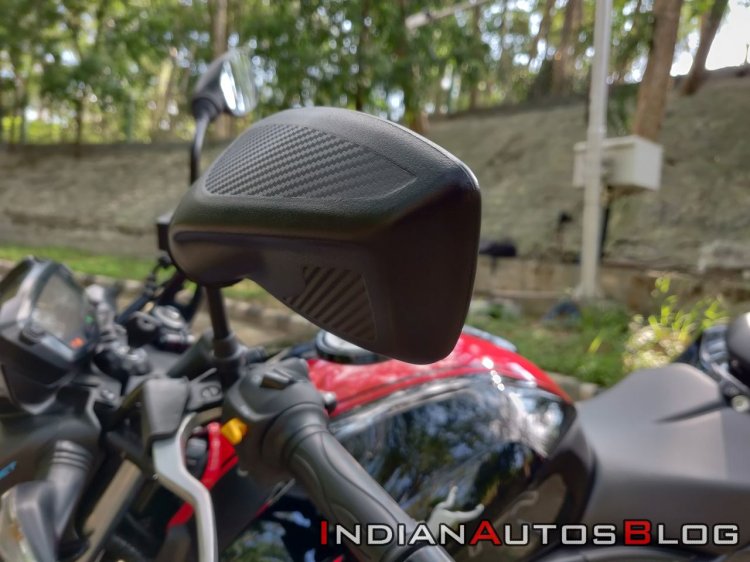
The cockpit is identical to that of the BS-IV model, although you would notice the changes once you start the vehicle. The instrument console, while retaining the white backlit display, features a revision to the reading. This has been done to integrate a DOT Matrix display for the TVS SmartXonnect system. Thus, the fuel gauge sits on the left side of the speedometer, below the tachometer. The gear position indicator sits on the extreme right side of the display, under the odometer. Other key information available on the display includes achieved top speed, 0-60 km/h timer and high-speed alert. The TVS SmartXonnect app brings the following features:
- Turn-by-turn Navigation (Ride and Tour Mode)
- Low fuel warning (Alert and Assist to find the nearest fuel station)
- Call and SMS notification
- Ride Statistics (Details, records and analysis)
- Last Parked Location
- Road Side Assistance
- Automatic App Launch
- Do Not Disturb mode
- Auto Reply SMS
- High-Speed Alert
- Crash alert notification
- G-Force measurement
- Lean angle display
The pop-up notification on the DOT Matrix display can be cleared with the new “Info” switch that is available on the left-side switchgear. The crash alert system, G-Force measurement and lean angle display are calculated through the smartphone. We tested the SmartXonnect function during the test ride, and the app successfully recorded most of the parameters. However, it did not register the lean angle that was achieved during the ride.
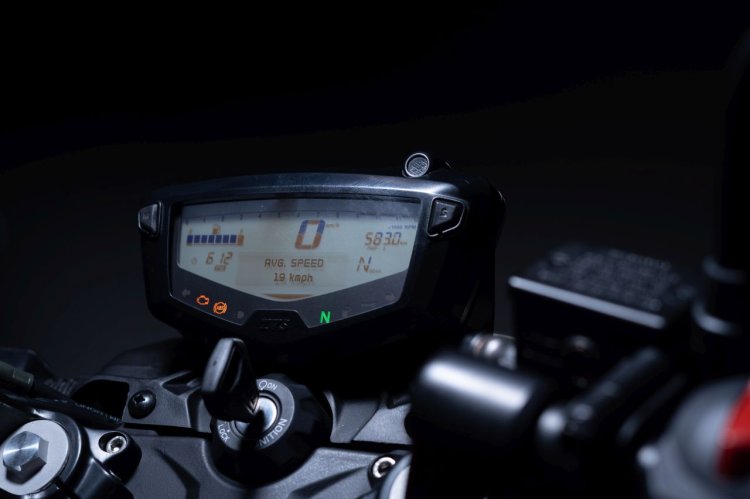
Apart from the changes listed above, the TVS Apache RTR 200 4V continues to use the same bodywork and lighting layout. The graphics, however, have been revised for a refreshed look. The bike continues to carry the superior build quality as its predecessor. The fit and finish, paint quality and switchgear setup are at par with the rivals, if not better. On the downside, the new LED DRLs aren’t the most appealing units, although it’s a matter of choice. Personally, I still prefer the compact units of the BS-IV model. Colour options include Gloss Black and Pearl White.
Also read: BS-VI TVS Apache RR 310 - First Ride Review
Engine and Performance
The BS-VI upgrade has not made the Apache RTR 200 lose a lot of power. The power and torque figures have dropped by just 0.5 PS and 1.8 Nm. Thus, the 197.75 cc oil-cooled, 4-valve, single-cylinder engine of the new model makes 20.5 PS of peak power 8,500 rpm and 16.8 Nm of maximum torque at 7,500 rpm. Do note that the peak power figure is identical to that of BS-IV model's the carburettor variant. TVS Motor Company claims a top speed of 127 km/h and a 0-60 acceleration of 3.9 seconds. With a 90 kg rider on board, we clocked a top speed of 118 km/h with some more steam left in the motor, and a longer stretch may see an even higher figure. The 0-60 km/h acceleration, as registered on the onboard timer, stood at 4.3 seconds.
The engine of the BS-VI model, similar to its predecessor's, delivers low- and mid-range performance. The motor feels uncomfortable under the 3,500 rpm mark. It starts to pull away cleanly post 3,500 rpm and builds power linearly all the way to 8,500 rpm. It starts to run out of breath post those levels. The redline stands at 11,000 rpm.
Also read: 2020 TVS Apache RTR 160 4V BS-VI - First Ride Review
The five-speed gearbox with a Race-Tuned slipper clutch function felt crisp. Aggressive downshifts were efficiently handled by the slipper clutch tech as we pushed the vehicle to its limits on the test track.
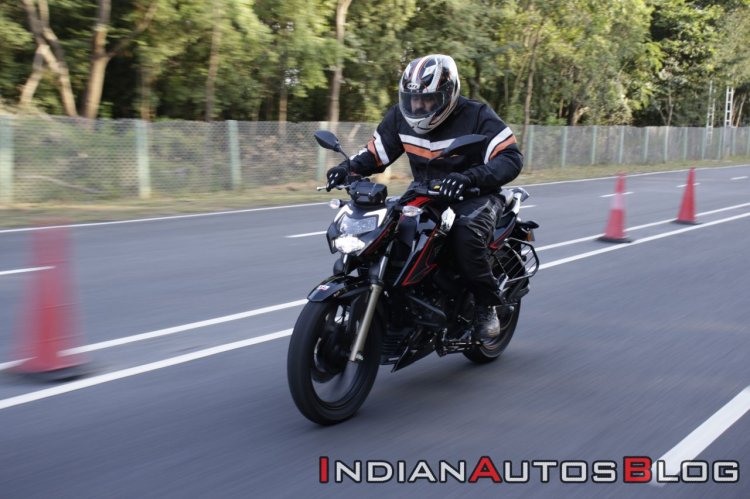
The 2020 iteration benefits from a new Glide Through Traffic (GTT) technology capability. The system aims to aid ‘low-speed urban riding’. The technology has been designed to keep the vehicle moving at a particular speed, irrespective of the incline on the road, without any throttle input. The rider has to gradually leave the clutch lever, without any throttle input to move the vehicle. The system works in first (7 km/h), second (11 km/h) and third gears (17 km/h). We experienced the GTT system at TVS Motor Company’s track, although we would really like to test the technology in real-life riding conditions.
Also read: TVS Apache RTR 180 BS6 launched at INR 1.01 lakh
Braking setup has been carried forward from the BS-IV version. Thus, anchoring power comes from a 270 mm petal-type disc at the front and a 240 mm petal-type rotor at the back. Dual-channel ABS with Rear Lift-off Protection (RLP) comes as standard. The anchoring setup is progressive and it sheds speed at a commendable rate. The ABS tech, too, avoids any drama under heavy braking – as we tested on the track.
Other upgrades include a ‘high-performance radial rear tyre’. It is claimed to reduce fuel consumption with its less rolling resistance.
Ride and Handling
The 2020 Apache RTR 200 4V, like its predecessor, features a clip-on style handlebar. The setup aims to strike a proper balance between sportiness and practicality. Thus, the ergonomics aren’t too forward-leaning, neither are they very commuter-ish.
The forward-leaning right position is confidence-inspiring as you push the vehicle around bends. The motorcycle feels planted on straight lines, and around corners, although the lack of windblast protection does bother at higher speeds. Refinement levels are pretty commendable, too, although vibrations are evident in the higher (post 9,000 rpm) rev band.

The suspension setup is carried forward from the BS-IV model, and the shock absorption tasks are handled by KYB-sourced conventional telescopic front forks and a rear mono-shock. We tested the motorcycle on a fine stretch of tarmac. However, with our experience on the BS-IV model, we expect the setup to deliver a plush ride experience in real-life conditions.
2020 TVS Apache RTR 200 Review - Verdict
The TVS Apache RTR 200 4V was a fine package in its previous form, and it’s no lesser in the latest iteration. Despite complying with the new emission norms, it manages to retain its raw and sporty character while being practical at the same time. The engine performance has seen a marginal decline in numbers on paper but that does not affect the fun factor by a huge margin.
In terms of styling, the new front fascia looks appealing and premium, although, as mentioned before, the new LED DRLs are not as appealing as the compact units of the BS-IV model.
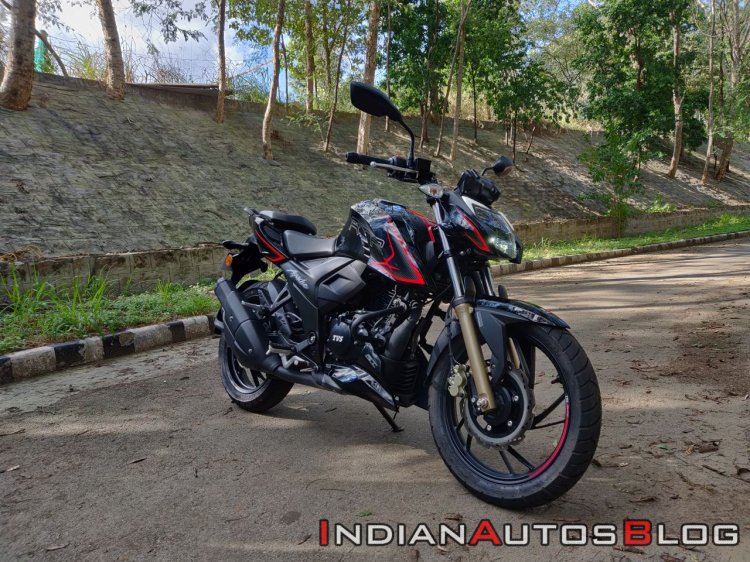
Also Read: TVS Jupiter Classic BS-VI launched at INR 67,911
The feature and emission norm upgrade have pushed the ex-showroom price higher by INR 12,155, and the 2020 TVS Apache RTR 200 4V now retails for INR 1.24 lakh*. The price increase may look steep, but that’s where most of its rivals are also likely to arrive in the BS-VI form.
Stay tuned on Indianautosblog to update more latest TVS Apache RTR 200 news and bike reviews

























